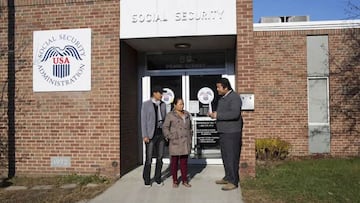SOCIAL SECURITY
Is it true that Social Security benefits will run out and end?
By 2034 the Social Security Administration (SSA) will be unable to cover the full cost of the various benefits programmes and may have to decrease recipients' payment size.

The 2021 annual report from the Social Security Board of Trustees makes worrying reading for the roughly 70 million people who currently receive payments from the Social Security Administration (SSA).
The report warns that the trust funds which disburse payments for the various SSA programmes are due to be depleted by 2034; one year earlier than previously thought. This does not mean that the payments would suddenly stop overnight, but does mean that there could be a significant drop-off in payment size for recipients.
Current estimates that retired and disabled workers would only get around 78% of their full benefits entitlement.
How are Social Security programmes funded?
The SSA uses two funds, overseen by the Treasury Department, to provide payments for the tens of millions who claim every month: the Old-Age and Survivors Insurance and the Disability Insurance trust funds.
It is the Old-Age and Survivors trust fund, which is responsible for the vast majority of Social Security payments, which is predicted to run dry in 2034. In contrast, the Disability Insurance fund should have sufficient funding through 2057.
The Old-Age and Survivors Insurance funding comes from:
- 89.6% - from the 12.4% Social Security tax that most workers pay on their earnings
- 3.6% - from income taxes that current Social Security recipients pay on their benefit payments
- 6.8% - from interest on the money already in the trust fund
Lawmakers propose Social Security 2100 to provide future funding
Last month Democrats in the House of Representatives reintroduced a bill from Rep. John Larson, Chair of the House Ways and Means subcommittee on Social Security, to boost the Social Security funds.
The updated bill, known as Social Security 2100 Act: A Sacred Trust, is a direct response to the Social Security Board of Trustees’ report and aims to push back the current funding deadline to 2038. While this four year extension may seem fairly insignificant, it is designed to provide Congress with the time needed to implement a more long-term solution.
In reintroducing the bill, Larson made clear that he was doing so in conjunction with President Biden’s wishes. The lawmaker said: “We have a person on Pennsylvania Avenue who knows and understands that Social Security is a sacred trust.”
When first proposed in 2019 the Social Security 2100 Act had more than 200 co-sponsors, all of whom were Democrats. The renewed bill aims to draw more bipartisan support and encourage colleagues across the aisle to join the effort.
The Windfall Elimination Provision and Government Pension Offset clause would reduce the benefits payments for those who already have their own pension income, helping to curb the overall cost of the programmes. This was an inclusion floated at a recent House hearing and has bipartisan support.






